Architecture
About Andrew Cusack
 Writer, web designer, etc.; born in New York; educated in Argentina, Scotland, and South Africa; now based in London.
Writer, web designer, etc.; born in New York; educated in Argentina, Scotland, and South Africa; now based in London. read more
News
Blogs
Reviews & Periodicals
Arts & Design
World
France
Mitteleuropa
Knickerbockers
Argentina
The Levant
Africa
Cape of Good Hope
Netherlands
Scandinavia
Québec
India
Muscovy
Germany
Academica
The Shrine of the Blessed Sacrament
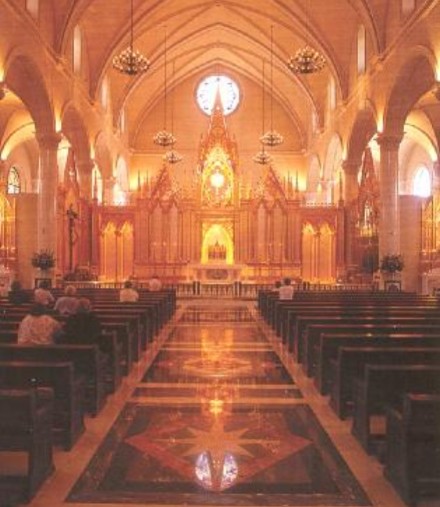
The Shrine of the Blessed Sacrament in Hanceville, Alabama (completed 1999).
NYU – Old & New

As we all know, New York University is a slighlty scattered urban institution based around Washington Square. It likes to bill itself as “having the city as your campus” which , of course, is a cheap cop-out for not having a real campus. Being ever-progressive, NYU has torn down all their historic buildings such as University Hall (seen above) on Washington Square.
What is not very well known is that New York University, founded as a bourgeois alternative to the then-aristocratic Columbia, decided to build a new university campus in the late 1890’s designed by McKim, Mead, and White. Columbia had just done the same thing, moving from Midtown around St. Patrick’s Cathedral to Morningside Heights, and NYU apparently felt the need to keep up with the Joneses. (more…)
The University Church, Dublin
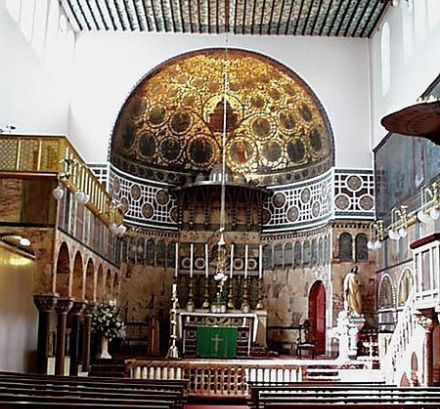
It is said that Newman was not a fan of the gothic revival. When he had this church built for his Catholic University of Ireland in Dublin (since then merged into the Royal University of Ireland which became the National University of Ireland, University College Dublin), he certainly made sure it was über-byzantine. Though beautiful on the inside, it has possibly the least imposing facade of any church I’ve ever seen. Perhaps that adds to its charm.
Going… Going…
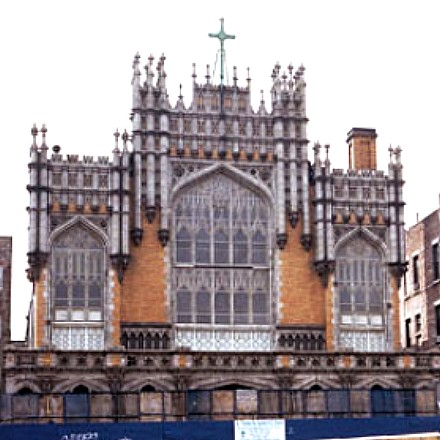
… not yet gone. Cardinal Egan and his abomination squad have begun demolishing the Church of St. Thomas the Apostle in Harlem. St. Thomas is one of New York’s architectural gems, especially known for its perpindicular gothic vaulted ceiling. It has been determined that the stained glass, the worth of which may reach into the millions, cannot be removed, and so will be lost with the rest of the church. The altar is already gone, although in honesty, it was the least attractive feature at St Thomas, a bit frilly.
Preservationist M.H. Adams: The church is “the most significant structure to be destroyed in the city since Penn Station.”
Anti-Abomination.com quips “At least the moneychangers didn’t try to sell the temple.”
Gabriel Meyer, the fourth generation at Mayer of Munich (the firm that made St. Thomas’s windows), told Cardinal Egan in a letter:
But it would seem that Egan’s bureaucracy will trump history, Christian charity, and appreciation for beauty. The property will not be sold, but will be replaced by apartments to bring revenue into the Archdiocesan treasury. Cardinal Egan has done much since he ascended to the episcopal throne of our great metropolis. By this, and many other actions, he has shown his allegiance, and it is not to Christ.
Novy Dvur
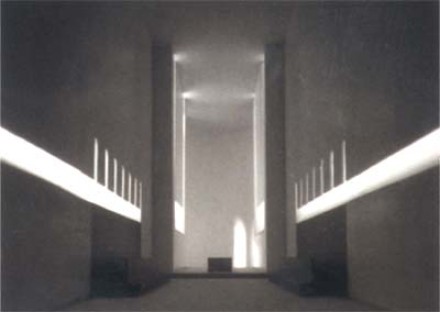
(Via Fr. Jim Tucker) The Telegraph reports on the new monastery at Novy Dvur.
I have to say I rather like it. My only issue is that it ought to have a giant, massive crucifix floating above the altar. I know the whole point is supposed to be minimalism and absence but it’s ridiculous for the central feature of a church to be the absence of anything. The central feature of both The Church and any church should be Christ. So put some Christ into it.
Or perhaps if the entirety of the church were to be covered wall to wall in great pulchritudinous and polychromatic murals except the sanctuary, which would remain completely blank and white, thus focusing on the other-ness of the Eucharistic sacrifice compared to our world.
More photos. (more…)
Sacred Architecture, Holy Architect
Every now and then, the Tablet has articles which are spot on. Read about the Blessed Antoni Gaudi in this week’s edition. Well worth a read.
Parliament House
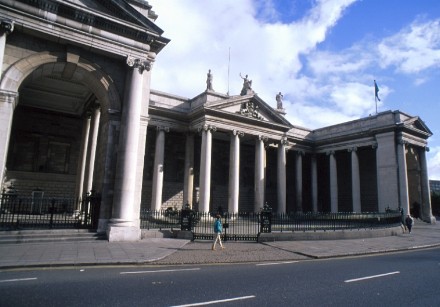
The Irish Parliament House, now the Bank of Ireland, on College Green in Dublin, is one of my favourite buildings in the world. You can go there and visit the House of Lords chamber. Unfortunately, the House of Commons chamber burned down shortly after the Irish Parliament was merged into the British one in 1800. It is supposedly the first purpose-built parliament building in the world, though no longer in use.
Harknessiana
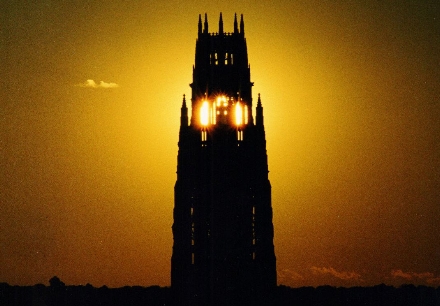
A beautiful shot of sunset through the Harkness Tower at Yale. Edward Harkness paid for the Harkness Memorial Quadrangle to be built in memory of his brother Charles, who died during the Great War. In addition to being a significant benefactor of Yale and St. Paul’s School, both of which he graduated from, he was also a patron of the University of St Andrews, where he was good friends with Principal Sir James Irvine.
At St Andrews, he built St. Salvator’s Hall, the first hall of residence for men since the end of the residential aspect of the colleges, as well as funding the renovation of the St. Salvator’s Chapel. His generosity is commemorated by a window in the chapel.
The trust he established also later paid for the restoration of St. Leonard’s Chapel, which had been abandoned in the middle of the nineteenth century.
Patroness of the Americas
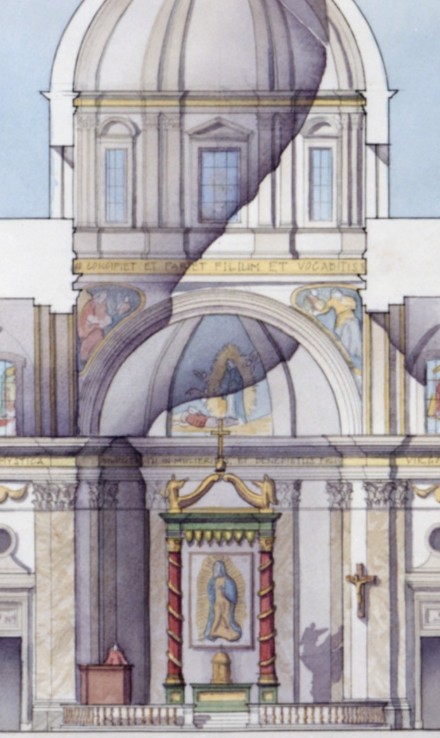
The ground has already been broken on the new Shrine of Our Lady of Guadalupe in the Diocese of La Cross, Wisconsin. La Crosse was formerly home to Archbishop Raymond Burke, one of the best bishops in our country. Burke has since been moved to the see of Saint Louis in Missouri. God willing, New York might get him some day, though Los Angeles could certainly use him more.
Blessed Virgin of Guadalupe, pray for the Americas, that we may become a beacon shining forth the light of Christ to all the nations.
Hail Mary, full of grace, the Lord is with thee. Blessed art thou amongst women and blessed is the fruit of thy womb, Jesus. Holy Mary, Mother of God, pray for us sinners, now and at the hour of our death. Amen.
Universitas Yalensis

The Yale University Library has a very interesting online exhibit worth visiting called Building a University: 1919-1940. It tracks various plans for the improvement of Yale’s campus during the first half of the last century.
Yale is a truly beautiful place, and home to works by some of my favourite architects (James Gamble Rodgers and Betram Grosvenor Goodhue). I remember upon visiting Yale that the Sterling Memorial Library was so comfortable that I feel asleep. (More likely I feel asleep because I was reading Toni Morrison for school, horrible drivel!).
I do rather admire Yale though. Of all the New World Universities it probably ties with the University of the South.
T-D Back in the Day
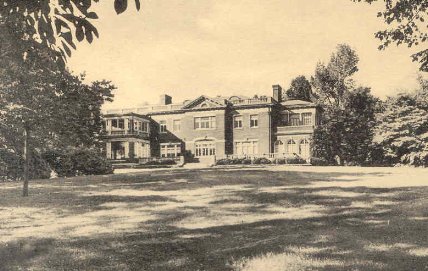
This afternoon I found this photo of Thornton-Donovan back in the day in the School’s archives. The structural changes to the Main Building since then are slight but noticeable.
Trinity College Chapel

The chapel at Trinity College Hartford, designed by Philip Frohman, the architect who was primarily responsible for the National Cathedral.
Altar at Our Lady of Walsingham
 Check out the high altar in the brand new Church of Our Lady of Walsingham in Texas. The church was designed by HDB, formerly known as Cram and Ferguson. They are the firm responsible for the second plan for the Cathedral of St. John the Divine here in New York. (The design most completed of the three so far). A new stained glass window has since been installed behind it, and more glass is to come. Visit the Church’s website here.
Check out the high altar in the brand new Church of Our Lady of Walsingham in Texas. The church was designed by HDB, formerly known as Cram and Ferguson. They are the firm responsible for the second plan for the Cathedral of St. John the Divine here in New York. (The design most completed of the three so far). A new stained glass window has since been installed behind it, and more glass is to come. Visit the Church’s website here.
Search
Instagram: @andcusack
Click here for my Instagram photos.Most Recent Posts
- Amsterdam November 26, 2024
- Silver Jubilee November 21, 2024
- Articles of Note: 11 November 2024 November 11, 2024
- Why do you read? November 5, 2024
- India November 4, 2024
Most Recent Comments
- on The Catholic Apostolic Church, Edinburgh
- on Articles of Note: 11 November 2024
- on Articles of Note: 11 November 2024
- on Why do you read?
- on Why do you read?
- on University Nicknames in South Africa
- on The Situation at St Andrews
- on An Aldermanian Skyscraper
- on Equality
- on Rough Notes of Kinderhook
Book Wishlist
Monthly Archives
Categories


